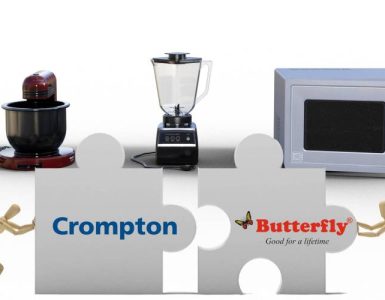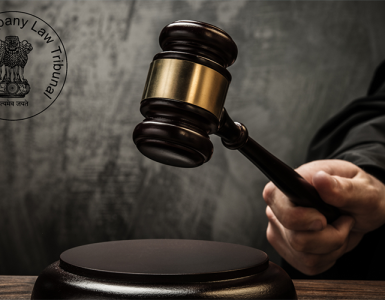At the Tata Group, the two chiefs – the present and the past – has had a varied style of functioning, yet their ultimate goal is to take the group to the zenith and build a global conglomerate to reckon with.
The erstwhile Chairman of the $110 billion salt-to-software conglomerate, Ratan Tata, propelled the group onto the world stage by acquiring and adding marquee brands such as Land Rover, Corus, Jaguar, Tetley Tea and New York’s Pierre Hotel. In the process, he also increased the company’s debt 11-fold in his final decade at the helm of the company. His vision was to make Tata a household name globally and he firmly believed that the high stakes would pay off in the future. His objective was to bring in half of the group’s revenues and profits from outside India.
Ratan Tata embraced globalization as the pace of foreign acquisitions grew dramatically. Between 1995 and 2003, Tata companies made, on average, one purchase a year. In 2004, they made six and in 2005-06 more than 20. In all Tata has spent around $20 billion on foreign companies. The company earns about three-fifths of its revenue abroad and employs more British workers than any other manufacturer, and two of its biggest companies, Tata Motors and Tata Communications, are listed on the New York Stock Exchange. The Corus acquisition had catapulted Tata Steel from the world’s 56th largest steel-maker to sixth.
However, most of the big-ticket acquisitions were done before the global financial crisis, which turned his vision topsy-turvy, especially with Corus. Its fortunes soon went down as Europe fell into a demand slump after the 2008 economic crisis and more recently has seen a flood of cheaper Chinese imports. While Ratan Tata’s global expansion has mostly proved successful, in the steel business they mistimed the cycle. Tata had, however, defended his acquisitions, saying that investing in Jaguar Land Rover during the global economic downturn paid handsome dividends when the US and European car markets revived.
Cyrus Mistry, the current chairman of Tata group who is the first from outside the immediate Tata family to head the group since it was founded in 1868, has his eye in the future and not the past. Working on the principle of Asset Right, Asset Light, he is selling loss-making acquisitions, especially those done overseas. After taking over in December 2012, his first actions were aimed at addressing the debt pile, raising cash, refinancing loans, selling assets and writing down their value, particularly in Europe where Ratan Tata had paid per-2008 bull-market prices.
While continuing the growth trajectory, he avoids the grand and expensive acquisitions, is conservative and careful in making new deals. He is not negating old strategy, but just making it work better. He is consolidating and bringing up all group companies to profitability and strength and the strategy and action plans are for long-term value creation. However, Tata companies are also burdened with a debt of $38 billion, the bulk of it on the balance sheets of Tata Steel, Tata Motors, and Tata Power. Other companies like TCS generate huge cash for the group. As a result, the total debt of listed Tata companies is 7.3 times the total profit they reported in FY15.
Mistry has a plan called Vision 2025 in place. It underlines that Tata companies should move into top 25 globally by market value within 10 years and make their products and services available to a quarter of the world’s population. The 48-year old leader of one of the country’s oldest conglomerate has managed to grow revenues at the conglomerate’s listed companies and profit has risen, too.
The decision to let go of the UK steel assets was made after over two years of understanding issues on the ground and trying to find a solution with the management. In fact, this was not the first tough call he made. In 2013, a year after Indian Hotels made an offer to buy London-based Orient Express Hotels, the group withdrew its $1.86 billion bid because of a global slump. Even Tata Chemicals made a write-down for its Africa operations, Tata Steel made a non-cash write-down of its Mozambique investment and Tata Motors too did a write-down of its investment in Spanish bus maker Hispano Motors. Also, Tata Chemicals shut down its soda ash and calcium chloride plant in Winnington in the UK in December 2013.
Tata Communications will also sell 74% stake in its data center business to Singapore Technologies Telemedia for $635 million.
The Tata group also sold stakes in two of its biggest firms TCS and Tata Teleservices. It raised $200 million from the sale of shares in TCS and another $2.7 billion from the sale of a 26% stake in mobile operator Tata Teleservices to Japan’s NTT DoCoMo. So, while selling assets may be a tough decision, a sale of loss-making assets signify good governance.
Tata Steel & Corus Sell-off
In April 2007, Tata Steel made an audacious bid of $12.7 billion to buy Corus and later pumped in another 4 billion pound to turn around the struggling UK asset. The company borrowed $10 billion to make the acquisition. It was the largest overseas acquisition ever by an Indian company and is also among the worst performers in creating value for shareholders since the acquisition. The steel business in Europe was buffeted by a series of crisis nobody could have predicted at the time of the purchase.
The business has suffered almost a decade of losses amid poor demand and the influx of cheap Chinese imports. To pare losses, Tata Steel UK signed an agreement with investment firm Greybull Capital to sell its long products Europe business. The deal will be completed once a number of outstanding conditions have been resolved, including a transfer of contracts, certain government approvals and the satisfactory completion of financing agreements. It represents roughly one-fourth of the Tata Steel UK business, which includes Scunthorpe steel plant, mills in Teesside and Northern France, an engineering workshop in Workington, a design consultancy in York and bulk terminal all employing over 4,000 people.
The acquisition made huge losses, raising its debts to Rs 80,700 crore in March 2015 from Rs 60,000 crore in March 2012. Tata Steel UK was reportedly losing $1 million a day in 2016 and the losses were accumulating faster than the profitable India operations could clear them. Corus, which reported a top line of $18 billion and a pre-tax net profit of $1 billion at the time of acquisition, reported a net loss of Rs 6,700 crore in FY15. In the nine years, it had been managed by the Tata Group, Corus reported profit only once.
Tata Steel’s difficulties were triggered by the UK and the European Union allowing China, Korea, and Russia to dump cheaper steel, which was exported at prices below the cost of production. Apart from Chinese dumping and slowing demand, the company is facing liability on its pension fund, British Steel Pension Scheme, and the trustees are in talks with the company to fund the deficit. In fact, Europe is wary of jeopardizing its relationship with China as it is the EU’s second-largest export market and fourth largest foreign direct investment destination. So, at the present juncture, only UK’s split with the European Union will allow the David Cameron government to rescue the ailing steel plant and save 15,000 jobs and the EU rules bolstered by two recent rulings restrict state-sponsored lifelines to industry.
Despite the huge losses incurred in its European steel business, Mistry supported the Indian division in the expansion, which completed construction of the 3-million ton steel mill at Kalinganagar in Odisha with an investment of Rs 25,000 crore. Going ahead, the performance in European business along with the conclusion of UK asset sales will remain most important factors to look at. While long product asset sale to Greybull is almost finalized, strip product asset sale and related issues like a settlement of pension liability and debt will continue to remain an overhang. While the Tatas are now determined to find a permanent solution to Corus, it will be painful waiting moments while negotiations take their course.
Tata Power: Angling growth
In 2014, Tata Power agreed to sell a 30% stake it held in PT Arutmin Indonesia, and its associated infrastructure assets, to the Bakrie Group for $500 million. Tata Power acquired a 30% stake in two Indonesian thermal coal companies owned by PTBumi Resources – PT Kaltim Prima Coal (KPC) and PT Are twin Indonesia in 2007 for $1.1 billion. Continuing on its selling spree, Tata Power also recently sold 50% stake in a joint venture that is developing a geothermal power project in Indonesia for $30 million.
These stake sales were done to pare debt as Mundra Ultra Mega Power Project in Gujarat faced challenges because of higher fuel costs and the company sought to address its cash flow concerns. With losses piling up at Mundra, it had created a lot of stress on Tata Power’s balance sheet due to cost under-recoveries—the cost of power generated at the plant is more than the selling price.
In 2012-13, Tata Power had reported a consolidated loss of Rs 85 crore on sales of Rs 33,248 crore. In 2013-14 that loss jumped to Rs 259 crore on sales of Rs 35,000 crore and in 2015-16, it earned a net profit of Rs 873 crore on sales of Rs 36,422 crore. In other words, a 4000 MW ultra power project in Mundra, Gujarat, was doing to Tata Power what Corus was doing to Tata Steel – dragging the rest of the company down. Its high fuel cost was wiping out the surplus of the rest of the company. The parent Tata Power has also waived off interest on a loan to Mundra and it has changed the method of depreciation.
However, now with global coal prices dropping, profit of the company has started rising once again. Moreover, the company got another boost when the Appellate Tribunal on Electricity said in April that a force majeure clause in its power purchase agreement with the state power distribution companies must be used to decide the hike in tariff for power. So, Tata Power will get a better compensatory tariff than what is allowed by the Central Electricity Regulatory Commission for the loss due to changes in tariff rules of Indonesian coal.
Tata Power is seeing some revival as Mistry has drawn a blueprint to sweat the existing assets, get rid of deadwood and keep looking for growth and if there are assets that have lost value, to book the losses on the balance sheet. Tata Power must focus all their energies on Mundra as half of its net worth is blocked there and also keep in mind that any revival in global coal prices will crimp profits once again. Moreover, the company must give more disclosures, especially on its joint ventures. Its expansion in renewable energy along with today’s announcement of the acquisition of Welspun assets should be covered.
Tata Motors: Turning better
At Tata Motors, things have been better. Although luxury brands Jaguar and Land Rover turned loss-making after the 2008 global economic crisis, the company hired consultants to help cut costs. After the restructuring efforts and rising sales in China, Tata Motor’s revenue increased and the acquisition resulted in good returns for shareholders. However, the slowing down of the Chinese economy and a slump in demand even in India has made the company look for growth avenues in the US and western Europe.
The Group’s chairman has a pulse on the Tata Motors and monitors every detail right from design to execution to sales himself after the sudden demise of its managing director Karl Slym in January 2014. So, while Tata Steel is struggling with its European operations, Tata Motors needs money to launch new models from Jaguar Land Rover n India also. A major part of the outstanding loan was because the company had taken a loan for the acquisition of JLR.
Refinancing of debt
One way to keep balance sheets healthy is through refinancing. In 2014, Tata Steel took a mammoth $7 billion debt refinancing scheme through 7-10 year loans to refinance the existing loan. It issued 10-year bonds and transferred some debt to its other subsidiaries. Also, in December last year, Tata Steel announced that its Singapore arm, T S Global Holdings had done agreements for $1.5 billion refinance. Tata Power, too, took the refinance route for Rs 10,000 crore of debt and nearly $1 billion of overseas debt in the past two years, which helped it to cut borrowing costs.
While most of the big issues continue unchanged, Mistry has managed to keep an overarching target for the group: nurturing group companies by leveraging the parenting advantage of the group, harnessing synergies to maximize the performance of companies and optimizing its portfolio for sustained future performance.




